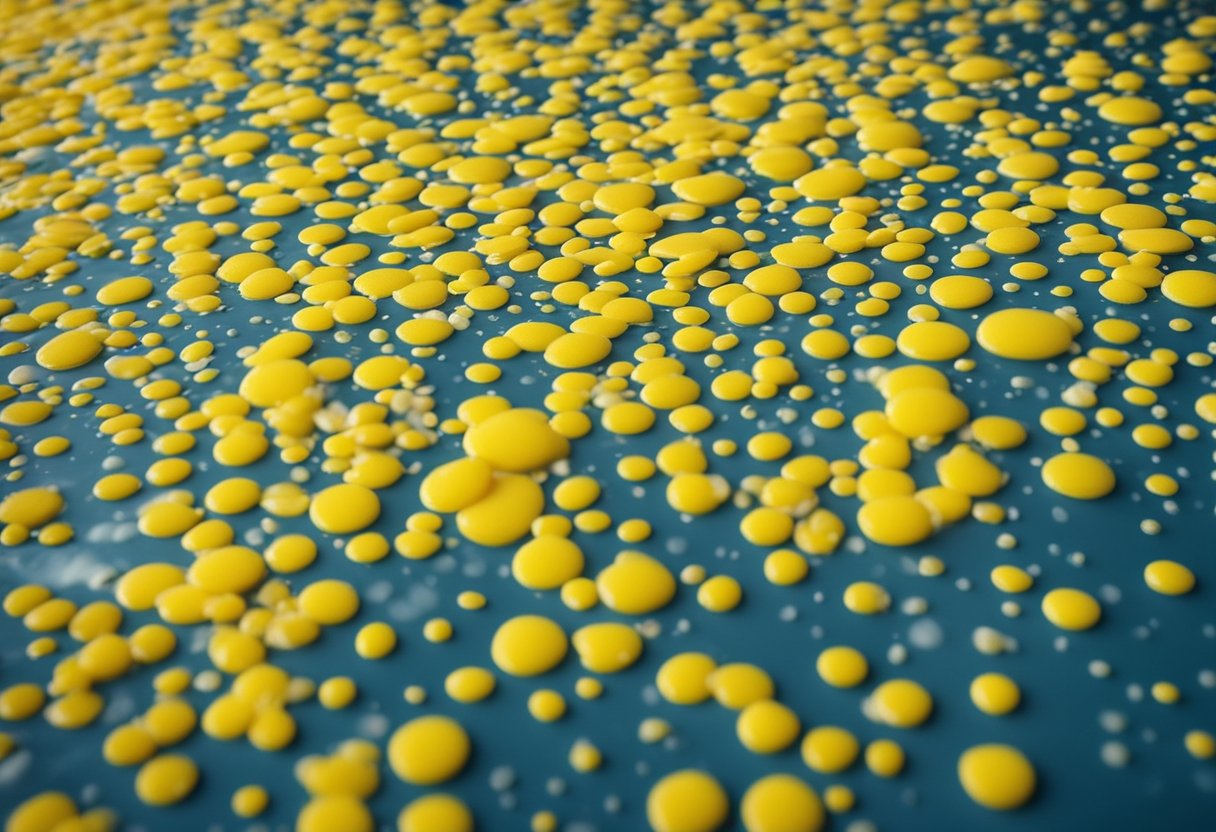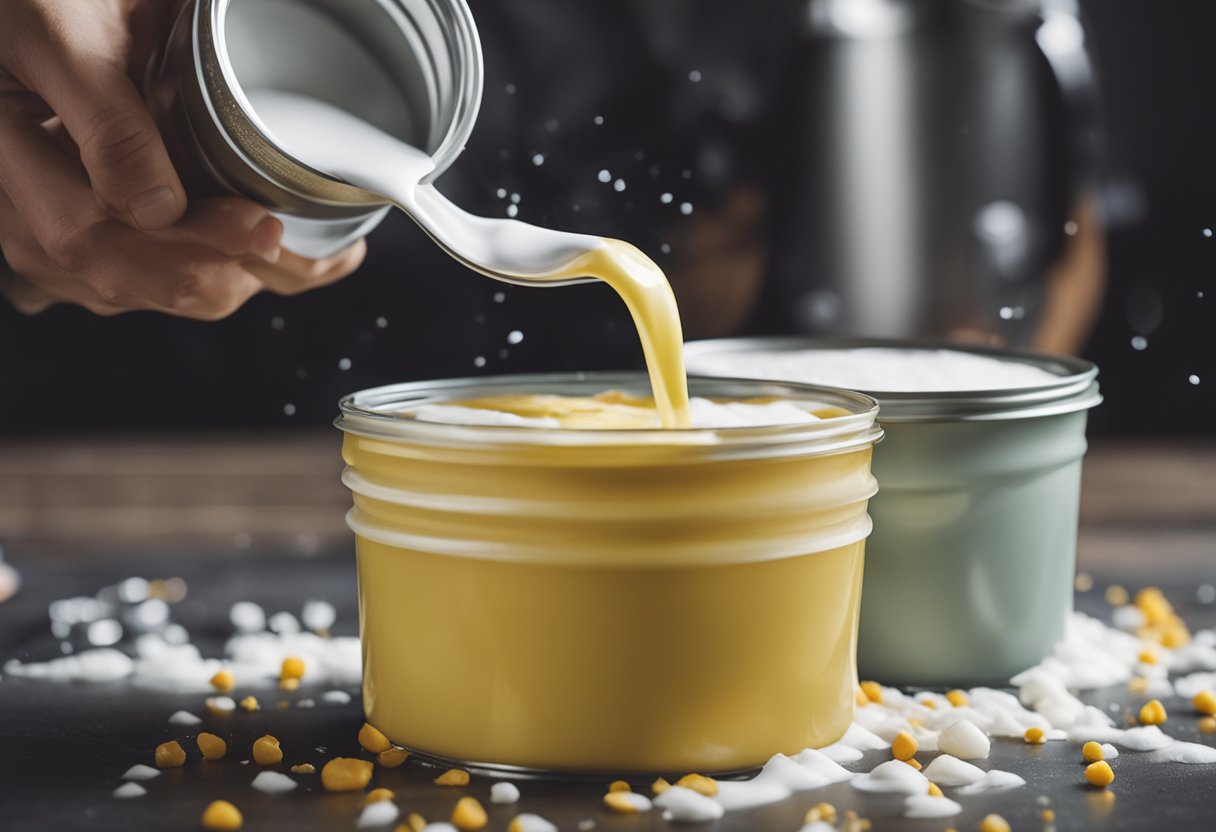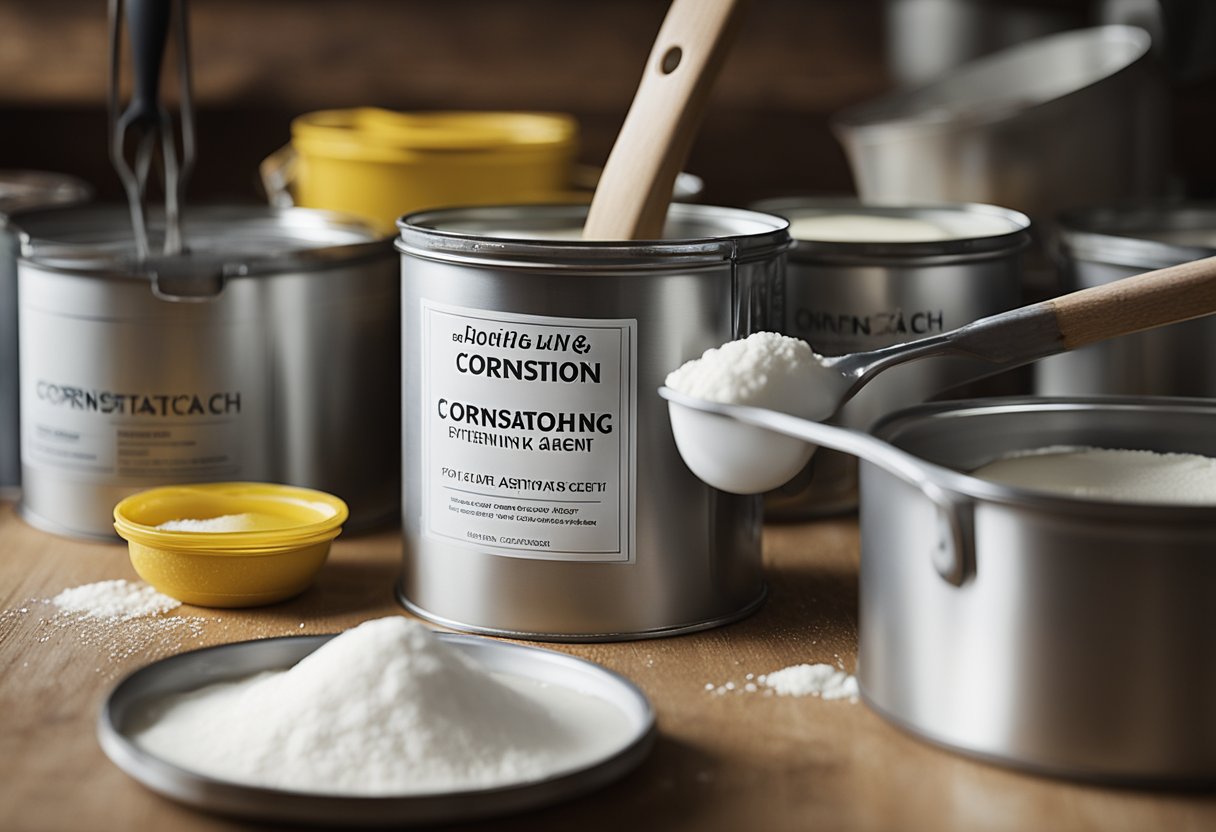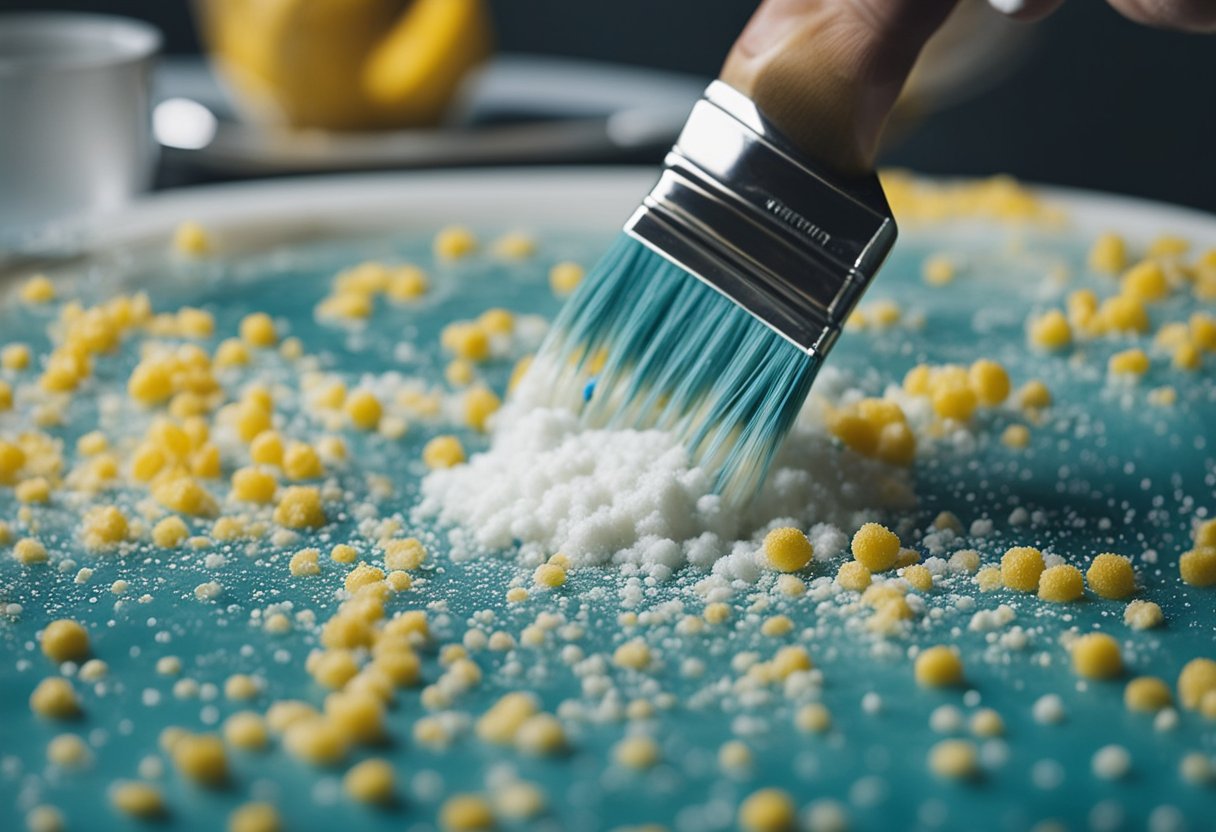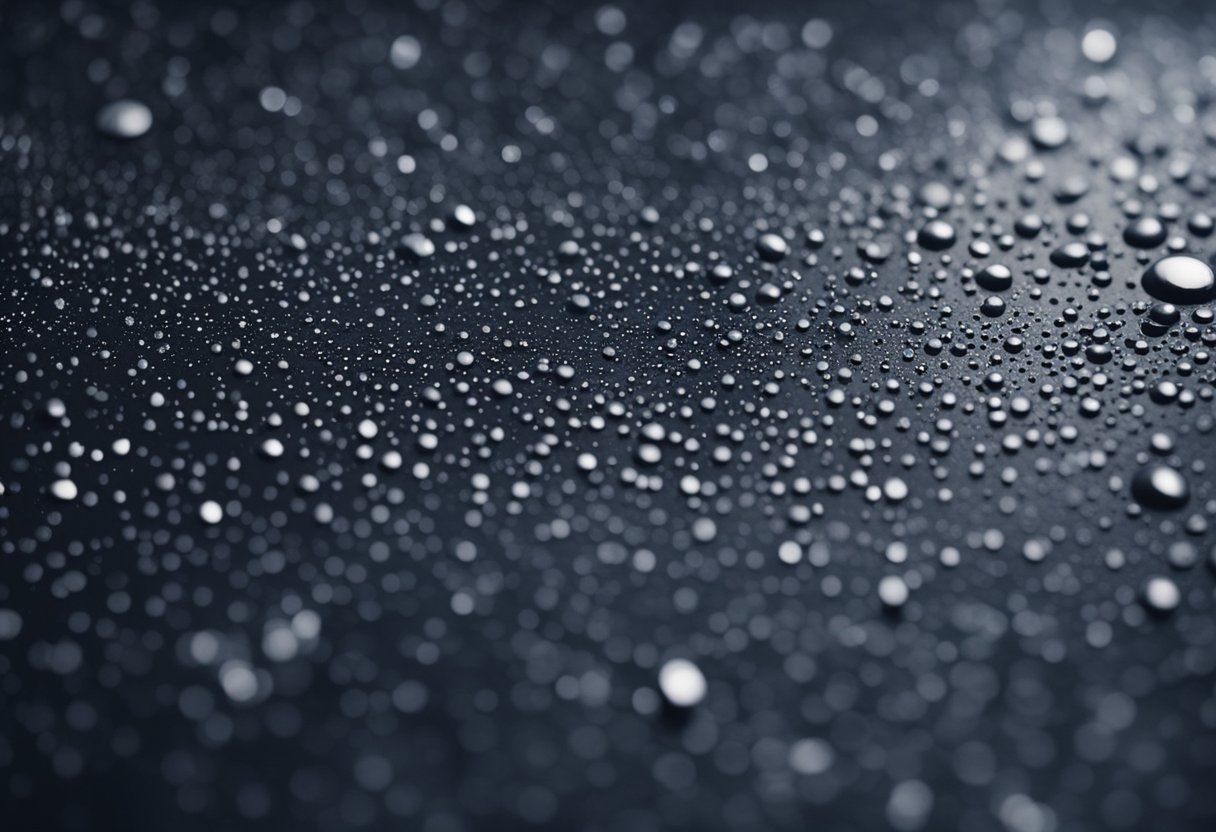As a homeowner or DIY enthusiast, you may be looking for ways to achieve a flat, matte finish on your painted surfaces. One cost-effective and easy method to achieve this look is by using cornstarch as a flattening agent. Cornstarch is a common household item that can be used to create a flat finish on various types of paint, including latex and oil-based paints.
Cornstarch can be mixed with paint to create a flattening agent that will reduce the sheen of the paint and create a matte finish. When using cornstarch, it is important to mix it with water to create a slurry before adding it to the paint. This will help to ensure that the cornstarch is evenly distributed throughout the paint and will not clump or settle on the bottom of the container. Additionally, it is important to use the right amount of cornstarch to achieve the desired level of flatness, which may vary depending on the type of paint being used.
Key Takeaways
- Cornstarch can be used as a cost-effective and easy method to achieve a flat finish on painted surfaces.
- Cornstarch should be mixed with water to create a slurry before being added to the paint to ensure even distribution.
- The amount of cornstarch used will vary depending on the type of paint being used.
Understanding Paint Finishes
https://www.youtube.com/watch?v=iooqmOFubGc&embed=true
As a professional painter, I know that understanding paint finishes is crucial to achieving the desired finish for any painting project. Paint finishes refer to the amount of light reflected by the painted surface, which affects the appearance of the painted surface.
There are three main types of paint finishes: flat, semi-gloss, and high gloss. Flat paint has the lowest amount of light reflection and is best suited for surfaces that do not require frequent cleaning. Semi-gloss paint has a moderate amount of light reflection and is ideal for surfaces that require occasional cleaning. High gloss paint has the highest amount of light reflection and is best suited for surfaces that require frequent cleaning.
The desired finish of a painting project depends on the surface being painted and the intended use of the painted surface. For instance, a flat finish is ideal for ceilings, while a glossy finish is best suited for doors and trim.
To achieve a matte finish, one can use flat paint or add a flattening agent to glossy paint. A flattening agent is a substance that reduces the amount of light reflection on the painted surface, resulting in a matte finish. Cornstarch is one of the flattening agents that can be used to reduce the glossiness of paint.
It is important to note that adding cornstarch to paint can affect the consistency of the paint, making it thicker and more difficult to apply. It is recommended to mix cornstarch with water before adding it to paint to achieve a smooth consistency. Additionally, it is advisable to test the paint mixture on a small area before applying it to the entire surface to ensure that the desired finish is achieved.
In some cases, a flat varnish or semi-gloss varnish can be used to reduce the glossiness of paint. However, it is important to note that varnish can alter the color of the paint and may not be suitable for all painting projects.
Basics of Cornstarch and Its Role in Paint
https://www.youtube.com/watch?v=mYTerCbDUzE&embed=true
As a professional painter, I know the importance of achieving a smooth and even finish on painted surfaces. One of the most effective ways to achieve this is by using cornstarch as a flattening agent.
Cornstarch is a fine, white powder that is commonly used as a thickening agent in cooking. When added to paint, it acts as a flattening agent, which helps to reduce the glossiness of the paint and create a more matte finish.
To use cornstarch as a flattening agent, it is important to mix it with the paint in the correct ratio. Generally, a mixture of one part cornstarch to ten parts paint is recommended. This creates a paste-like consistency that can be applied to the surface using a brush or roller.
It is important to note that using too much cornstarch can result in a lumpy or grainy finish, so it is important to use the correct ratio. Additionally, cornstarch should only be used with water-based paints, as it can cause oil-based paints to separate.
Overall, cornstarch is a highly effective and affordable way to achieve a smooth and even finish on painted surfaces. By following the correct mixture ratio and using it with water-based paints, you can achieve a professional-looking finish that is sure to impress.
Creating a Flattening Agent Using Cornstarch
https://www.youtube.com/watch?v=WvO25zMZG4w&embed=true
As a DIY enthusiast, I have experimented with various painting techniques and discovered that cornstarch is an effective flattening agent. A flattening agent is a substance added to paint to reduce its glossiness and create a matte or satin finish. Here’s how to create a flattening agent using cornstarch:
-
Get a container and fill it with cold water. The amount of water you use depends on the amount of paint you want to flatten. A good rule of thumb is to use one tablespoon of cornstarch for every cup of water.
-
Add cornstarch to the cold water and stir the mixture with a paint stick until it dissolves completely. You can also use a blender to mix the cornstarch and water, but make sure you don’t create too much foam.
-
Add the flattening paste to the paint and stir it thoroughly. The amount of flattening paste you use depends on the desired level of glossiness. Start with a small amount and add more if necessary.
-
Apply the paint to the surface you want to paint and let it dry. The paint will dry to a matte or satin finish, depending on the amount of flattening paste you used.
Cornstarch is not the only flattening agent available. Other flattening agents include talc, baby powder, and commercial flattening agents. However, cornstarch is a cost-effective and readily available option that works well with most types of paint.
When using cornstarch as a flattening agent, it’s important to use cold water and mix it thoroughly to avoid clumps. You can also experiment with different ratios of cornstarch and water to achieve different levels of glossiness.
In summary, creating a flattening agent using cornstarch is an easy and effective way to achieve a matte or satin finish on your paint job. With a few simple steps, you can create a custom flattening agent that works with your preferred type of paint.
Application Process
https://www.youtube.com/watch?v=dGaLHzndMrc&embed=true
When it comes to using cornstarch to flatten paint, it’s important to follow a few simple steps to ensure the best results. Here’s my recommended application process:
-
First, mix three tablespoons of cornstarch with four ounces of cold water. Whisk the mixture until the cornstarch is completely dissolved.
-
Next, add the cornstarch mixture to your paint. The amount of cornstarch you need will depend on the amount of paint you’re using, but a good rule of thumb is to use about one tablespoon of cornstarch for every cup of paint.
-
Once you’ve added the cornstarch, stir the paint thoroughly to ensure that the cornstarch is evenly distributed.
-
Apply the paint to your surface using a paint brush or spray paint. If you’re using a brush, be sure to use long, even strokes and avoid going over the same area multiple times.
-
If you’re working with wood or glass, it’s a good idea to apply a primer before adding the cornstarch mixture. This will help the paint adhere better to the surface.
-
Once you’ve applied the paint, let it dry completely before applying a topcoat. This will help ensure that the cornstarch mixture doesn’t interfere with the final finish of your paint job.
-
If you want to add coloring to your paint, it’s best to do so before adding the cornstarch mixture. This will help ensure that the color is evenly distributed throughout the paint.
By following these simple steps, you can use cornstarch to achieve a flat finish on your paint job. Whether you’re a DIY enthusiast or a professional painter, cornstarch can be a useful tool in your arsenal for achieving the perfect finish on your next project.
Alternative Flattening Agents
https://www.youtube.com/watch?v=ucHxg-xe7oY&embed=true
While cornstarch is an effective flattening agent, there are other options available as well. Here are a few alternatives to consider:
Silica
Silica is a common ingredient found in many commercial paint flattening agents. It is a fine powder that can be mixed into paint to reduce glossiness and give it a matte finish. Silica is also used in other industries, such as the production of glass and ceramics.
Baby Powder and Talcum
Baby powder and talcum powder are also popular flattening agents. They work by absorbing the excess oils and moisture in the paint, which helps to reduce the shine. However, it is important to note that these powders can affect the color of the paint, so it is best to test them on a small area first.
Solvent
Another option is to use a solvent to reduce the glossiness of the paint. This can be done by adding a small amount of solvent to the paint, which will help to break down the gloss and give it a flatter finish. However, it is important to use the right solvent for the type of paint you are working with, as some solvents can damage certain types of paint.
Overall, while cornstarch is a great option for flattening paint, there are other alternatives available as well. It’s important to choose the right flattening agent for your specific needs and to test it on a small area before applying it to the entire surface.
Maintaining and Caring for a Flat Finish
Once you have achieved the perfect flat finish on your painted surface, it is essential to care for it properly to ensure its longevity. Here are some tips to help you maintain and care for your flat finish.
Clear Coat
A clear coat can help protect your flat finish from scratches, chips, and other damage. Applying a clear coat will also give your flat finish a glossy look. However, if you prefer the matte look, you can skip the clear coat.
Supplies
To care for your flat finish, you will need a few supplies, including a microfiber cloth, mild soap, and water. Avoid using harsh chemicals or abrasive cleaners that can damage your flat finish.
Sanding and Sandpaper
If you need to touch up your flat finish, you can use sandpaper to remove any imperfections. However, it is crucial to use the right grit sandpaper to avoid damaging the flat finish. Use a fine grit sandpaper and sand lightly to avoid scratching the surface.
Durability
Flat finishes are generally less durable than glossy finishes. Therefore, it is essential to be careful when handling objects that may scratch or chip the surface. Avoid dragging heavy objects across the painted surface and use coasters to protect the surface from spills.
By following these tips, you can keep your flat finish looking great for years to come.
Considerations for Different Types of Paint
When it comes to flattening paint using cornstarch, it is important to consider the type of paint you are using. Different types of paint may react differently to the addition of cornstarch, and it is important to understand these differences in order to achieve the desired result.
Latex Paint
Latex paint is a water-based paint that is commonly used for interior and exterior surfaces. When using cornstarch to flatten latex paint, it is important to mix the cornstarch with water first before adding it to the paint. This will help to prevent clumping and ensure that the cornstarch is evenly distributed throughout the paint.
Acrylic Paint
Acrylic paint is a water-based paint that is commonly used for art projects and other applications. When using cornstarch to flatten acrylic paint, it is important to mix the cornstarch with water first before adding it to the paint. This will help to prevent clumping and ensure that the cornstarch is evenly distributed throughout the paint.
Glazing
Glazing is a technique that involves adding a transparent or translucent layer of paint to a surface in order to create a subtle, luminous effect. When using cornstarch to flatten glazing, it is important to mix the cornstarch with water first before adding it to the glaze. This will help to ensure that the cornstarch is evenly distributed throughout the glaze.
Pigment
Pigment is a substance that is added to paint in order to give it color. When using cornstarch to flatten pigment, it is important to mix the cornstarch with water first before adding it to the pigment. This will help to prevent clumping and ensure that the cornstarch is evenly distributed throughout the pigment.
PPG
PPG is a brand of paint that is commonly used for automotive applications. When using cornstarch to flatten PPG paint, it is important to mix the cornstarch with water first before adding it to the paint. This will help to prevent clumping and ensure that the cornstarch is evenly distributed throughout the paint.
In conclusion, when using cornstarch to flatten paint, it is important to consider the type of paint you are using and to mix the cornstarch with water first before adding it to the paint. This will help to ensure that the cornstarch is evenly distributed throughout the paint and will help to prevent clumping.
Choosing the Right Tools and Materials
When it comes to flattening paint, using the right tools and materials is crucial to achieving the desired results. Here are some tips to help you choose the right tools and materials for your project.
Paint
The type of paint you use will affect the outcome of your project. Semi-gloss or high-gloss paint is recommended for flattening with cornstarch. These types of paint are easier to flatten and will give you a smoother finish.
Cornstarch
Cornstarch is the key ingredient in flattening paint. It is a natural and safe alternative to commercial flattening agents. When using cornstarch, it is important to mix it properly with water and paint. The ratio of cornstarch to paint will depend on how matte you want the finish to be. A ratio of 1:4 (cornstarch to paint) will give you a matte finish, while a ratio of 1:8 will give you a satin finish.
Mixing Container
It is important to use a mixing container that is 20-30% larger than the amount of paint you start with. This is because when you add your flattener, the volume will increase, and you need plenty of room to get the paint mixed. A high-shear mixing blade is also recommended to get the flatteners to disperse evenly.
Application Tools
The tools you use to apply the paint will also affect the appearance of the finished product. A good quality brush or roller is recommended for furniture or home decor projects. If you are working with hardware, a spray gun may be more appropriate. It is important to choose the right tool for the job to achieve the best results.
By following these tips and using the right tools and materials, you can achieve a professional-looking finish on your furniture, hardware, or home decor projects.
Frequently Asked Questions
How can I make glossy paint look flat?
If you have glossy paint and want to make it look flat, you can use a flattening agent. Cornstarch is a popular and affordable flattening agent that can be used to achieve a flat finish. Simply mix cornstarch with water and add it to your paint until you achieve the desired flatness.
How can I make satin paint flat?
If you have satin paint and want to make it look flat, you can use the same method as with glossy paint. Mix cornstarch with water and add it to your paint until you achieve the desired flatness. Keep in mind that the amount of cornstarch you add will affect the color and texture of the paint, so it’s important to test it first on a small area.
What happens when you add cornstarch to paint?
When you add cornstarch to paint, it acts as a flattening agent. It reduces the gloss of the paint and creates a flat finish. However, adding too much cornstarch can affect the color and texture of the paint, so it’s important to use it in moderation.
What is a universal flattening agent?
A universal flattening agent is a product that can be added to any type of paint to achieve a flat finish. Some common universal flattening agents include talc, silica, and calcium carbonate. However, cornstarch is a popular and affordable alternative that can be used with most types of paint.
How can I flatten oil-based paint?
Oil-based paint can be more difficult to flatten than water-based paint. However, you can still use cornstarch as a flattening agent. Mix cornstarch with water and add it to your oil-based paint until you achieve the desired flatness. Keep in mind that oil-based paint takes longer to dry than water-based paint, so you’ll need to wait longer before applying a second coat.
What paint additive can I use to reduce gloss?
In addition to cornstarch, there are other paint additives that can be used to reduce gloss. Some common additives include flatting paste, silica, and talc. It’s important to use the correct amount of additive to achieve the desired flatness without affecting the color or texture of the paint.

Hi, I’m Sal Muller of Tooltrip.com. My DIY experience led me to understand essential power tools for home projects. Tooltrip.com guides enthusiasts and professionals in choosing right tools for any job. I provide concise top tool reviews for easier, efficient DIY.

